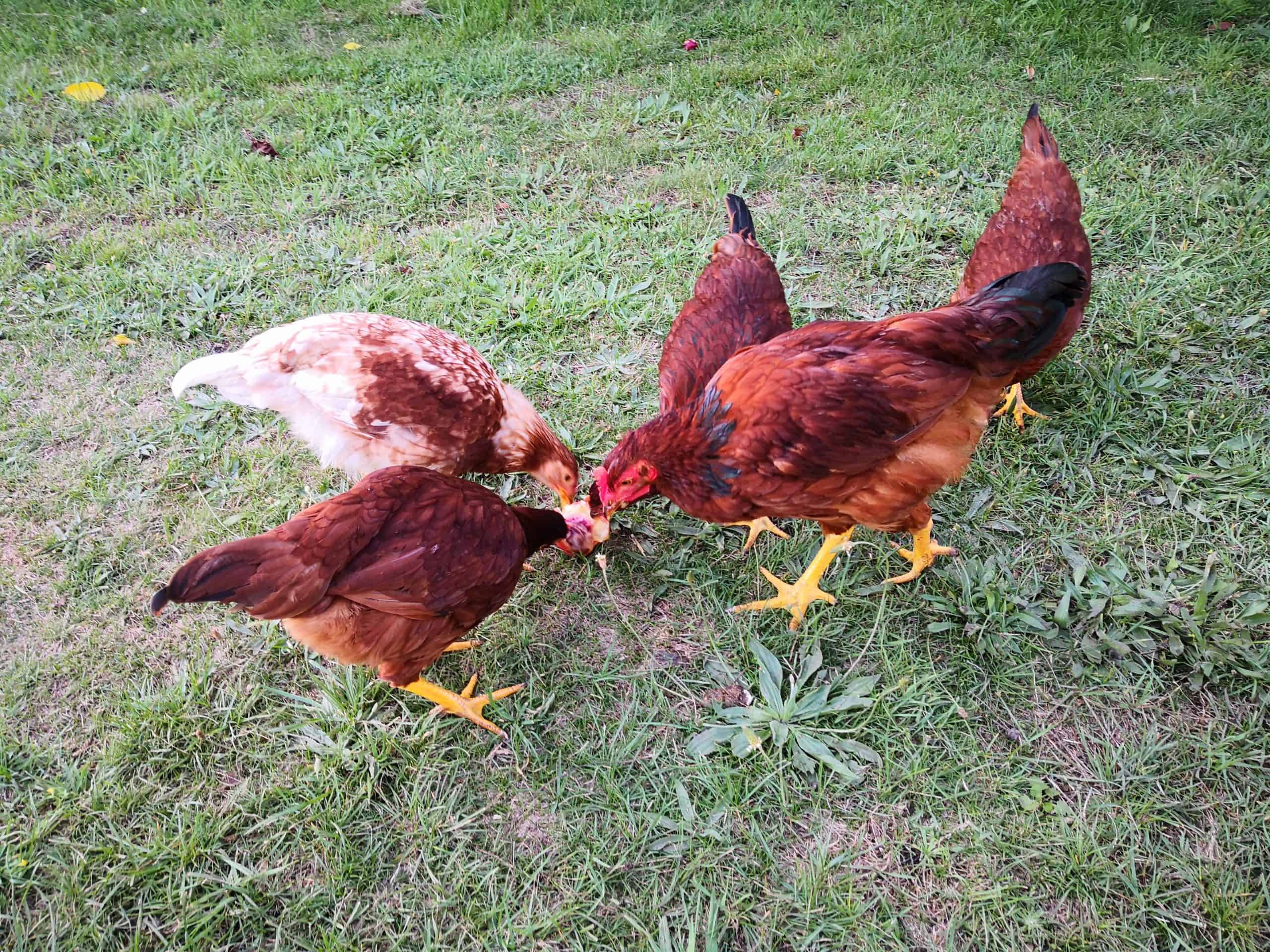For centuries, backyard chicken farmers have successfully raised chickens by feeding them a variety of diets. Some chickens have been entirely raised on no-brainer commercial diets; others have been fed (with a lot of thought and effort) using a home-mixed feed.
There is no wrong or right way when it comes to feeding your chickens. You can choose what to feed your chickens based on their health, your situation, and several other factors. Your choice of feeding program can be entirely based on your ideals and goals for your birds, the kind of time you have on hand, your budget and your access to quality feed ingredients.
In this guide, we will discuss everything you need to know about chicken feed.
Table of Contents
What to feed chickens?
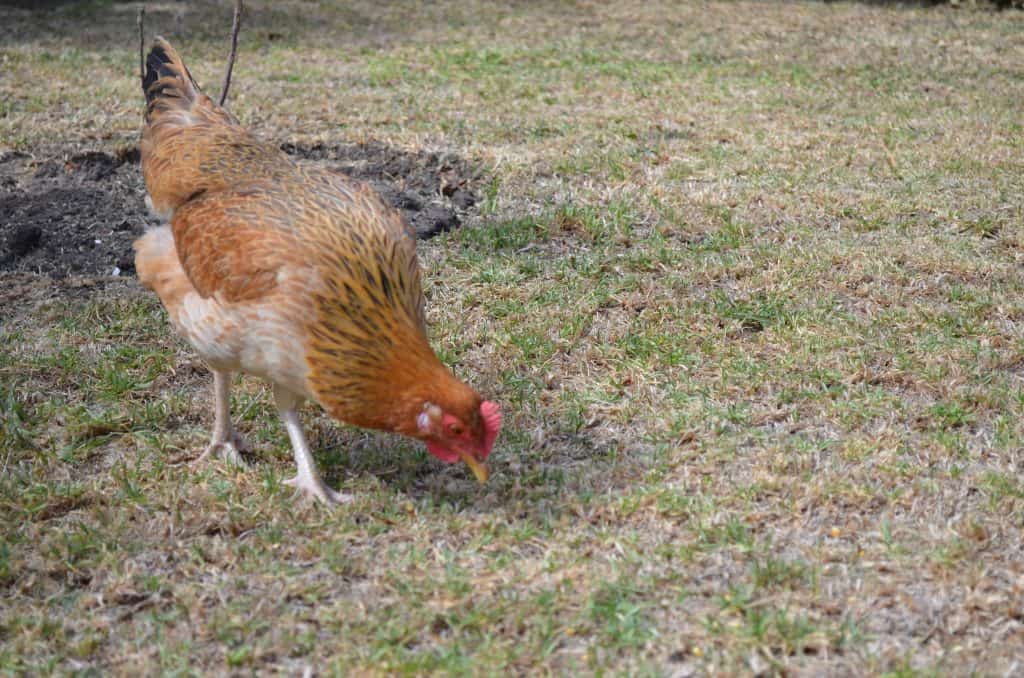
Chickens can be fed a complete commercial diet, choice feed, or homemade-mixed diet. Many chickens are also pasture fed. Let us see what each type means as well as their advantages and disadvantages.
1. Commercial chicken feed
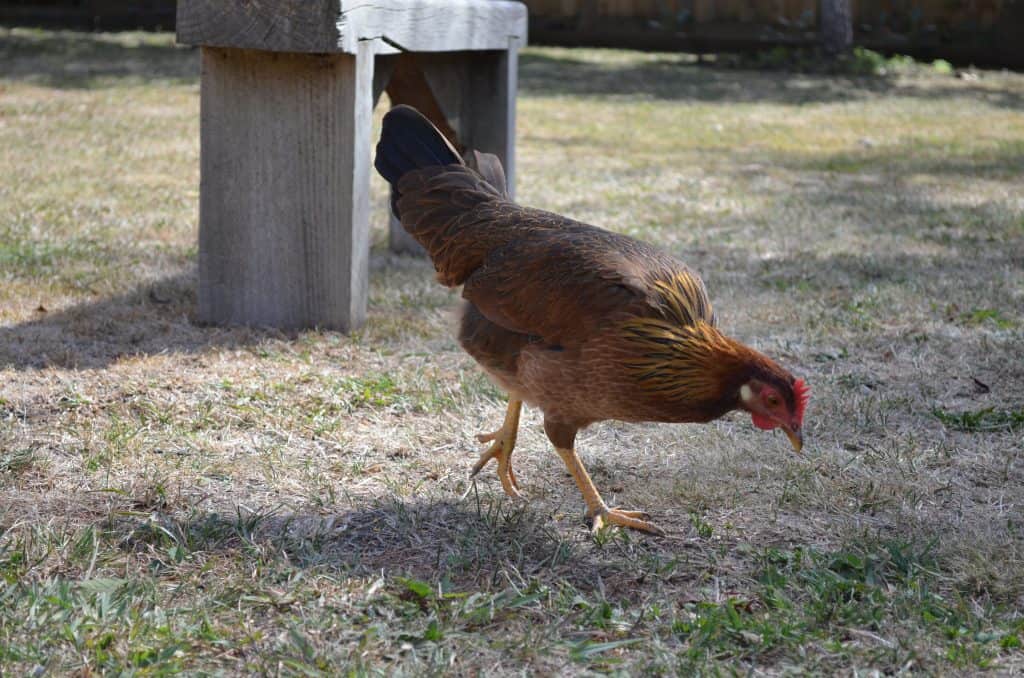
There are many advantages to feeding chickens a store-bought or commercial diet.
Easy and convenient
Feeding a bag of commercial chicken feed is often convenient for many backyard chicken farmers. It is convenient and saves time. You also do not have to spend a lot of thought on whether your flock is getting the balanced nutrition it needs.
Inexpensive – especially for smaller flocks
Commercial chicken feeds are convenient for small flock owners as you do not need bulk storage. This prevents spoilage and waste of food. You also do not need any special mixing equipment.
It is a no brainer!
A bag of chicken feed will tell you exactly how much to feed your birds. The label also will indicate the species and age of birds the feed is indicated for and how to feed it. Many commercial feeds are supposed to be free-fed meaning that you must keep your chickens’ feeding troughs filled at all times so your birds can have their fill as they want.
Disadvantages
Organic commercial feeds can be quite expensive, especially when shipped from long distances. You also need storage space to ensure that the bulk commercial feed remains clean, dry, and free from rot and spoilage.
2. Home-mixed feed

Some backyard chicken keepers choose to mix their own chicken-feed at home. For this purpose, they use local grains, discarded foods, by-products like brewer’s grains, home-grown farmed insects, etc.
There are a few advantages to mixing your own chicken feed:
You know what you are feeding your birds
Recently, there were reports of the use of arsenic in commercial chicken feeds to reduce intestinal worms and insects in chickens. However, this has led to arsenic exposure to humans and that is why many farmers prefer to mix their own chicken feed.
Homemade chicken feed is free from additives and chemicals such as arsenic and you know exactly what your flock is eating.
It is usually inexpensive
Many commercial organic feeds are often shipped from long distances. This can increase the cost of commercial chicken feed. That is one of the main reasons why so many chicken keepers prefer to feed their home-mixed organic chicken feed.
Disadvantages of homemade chicken feed
The disadvantage of a home-mixed feed is that one needs to have a solid knowledge about poultry nutrition. You may want to discuss deficiencies in your birds, if any, with a knowledgeable breeder or a vet to ensure that your birds remain healthy throughout.
There is also a risk of digestive issues, spoilage and toxicities with home-mixed feed. Also, you need large storage space to ensure that the feed, when mixed on a large scale, remains clean and free from pests and bugs.
3. Choice feeding
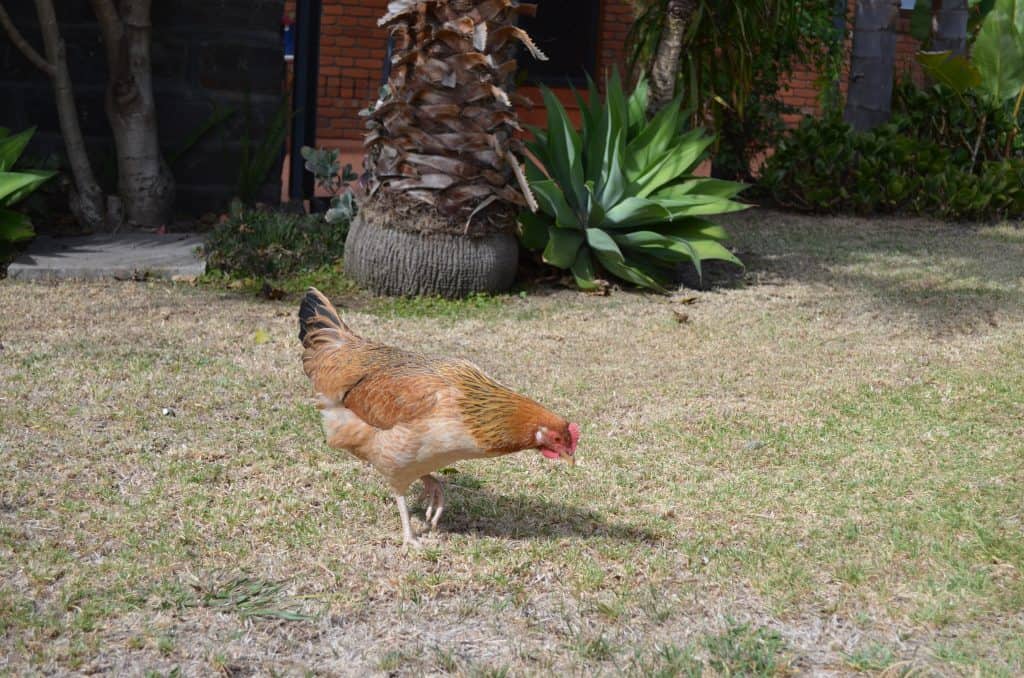
Choice feeding is a method of relying upon the birds’ instinct and knowledge and letting them choose what they wish to eat. This involves offering them a variety of feed ingredients.
For example, you can offer three feeding troughs to your laying hens: one with mix of protein vitamin, and mineral supplement, second with whole grains or scratch, and a third with a source of calcium such as ground oyster shells. The birds choose to peck away at all three varieties from time to time, as they wish.
4. Pasture feeding
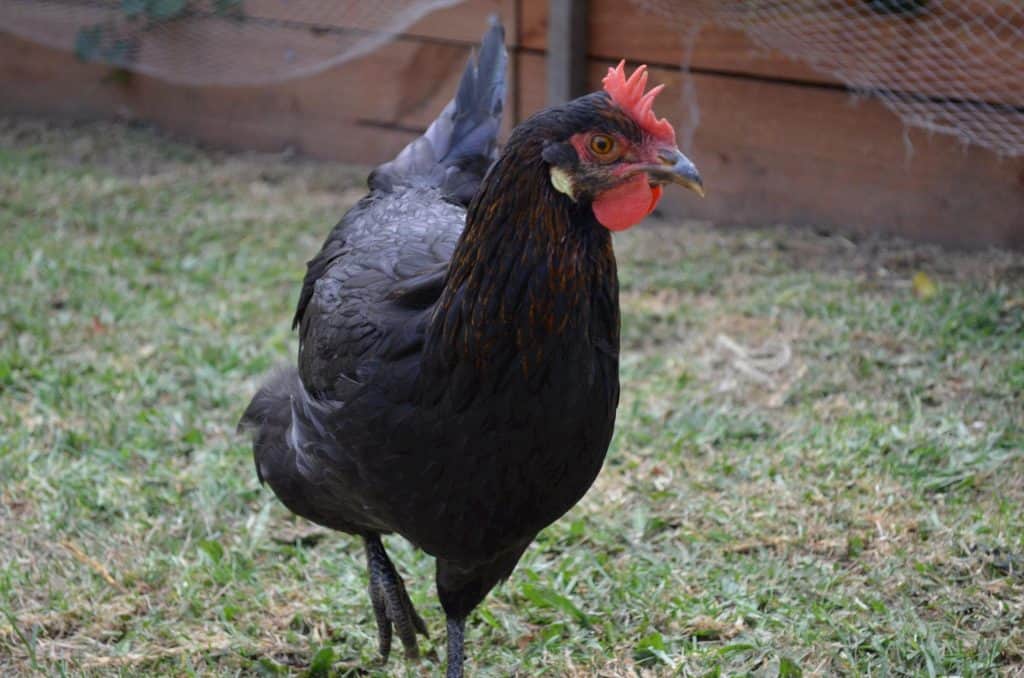
Apart from home-mixed, choice-feeding, and commercial feeds, you can also allow your chickens to free-range on your pasture. Pastures provide poultry birds with at least 5-30% of their nutritional requirements. The best pasture contains a variety of grasses like alfalfa, clover, and other protein-rich legumes.
Let us now discuss a homemade chicken feed recipe.
DIY homemade chicken feed
Here is a simple menu of homemade chicken feed on daily basis. It is a popular diy homemade chicken feed sample to keep young chickens healthy and is derived from Mr. I.K Felch (breeder and author) book Poultry Culture.
- Breakfast – fish chowder + boiled potatoes + cornmeal + shorts (left over from milled wheat flour) + Salt and pepper
- Mid-morning – Oats + wheat + steamed clover
- Dinner – Cracked corn + chowder leftover from breakfast
- Supper – cracked corn and barley
You can vary your chicken feed ingredients on a day to day basis. Talk to your breeder or a vet to guide you.
How much feed for chickens do you need?
The following quantities are applicable to commercial and home-made feeds. However, depending on the ingredients, they will vary.
- 25 two-week old chickens eat at least 25 lb feed per week
- 25 four-week old chickens eat at least 50 lb feed per week
- At 8 weeks, 25 meat-bred chickens will eat at least 100 lb of feed
- 25 laying hens will eat 25 lb of feed per week – less in the beginning and more at maturity.
- 25 mature, laying hens will eat 50 lb of feed per week.
What is fermented chicken feed? Why should you ferment chicken feed?
Fermented chicken feed is nothing but chicken feed mixed with water and left to ferment for a while in order to increase its nutritional content.
Fermenting the grains in the feed enhances the feed’s digestibility. You also increase the content of vitamins B, C, and K in the feed as well as protein. Your birds’ water consumption also goes up automatically.
The process of fermentation produces lactic acid in the feed which is very good for chickens’ digestion. It also promotes good intestinal bacteria and that enhances the birds’ immunity as well.
Fermented chicken feed is especially beneficial for laying hens as it gives rise to larger, bigger, and thicker eggshells.
The best part: your birds will eat lesser fermented feed as compared to regular or dry feed. This is because; they are getting all the nutrition they need. So you will also lower your costs of buying or making chicken feed.
How to ferment chicken feed?
Ingredients
- 1 day’s worth of feed – use whole-grain or cracked-grain feed as it ferments better than pellets
- Large plastic or glass container cleaned and sterilized with soap and hot water
- Filtered, chlorine-free water.
- Cheesecloth
- Rubber band
Method
- Pour your birds’ daily feed ration in the container.
- Now add water to the container until it is 2/3rd full.
- Stir well.
- Cover the container with cheesecloth and rubber band
- Place the container at room temperature on in direct sunlight. Ensure that the temperature is at least 60 F.
- A few times each day, remove the cloth and stir the mixture to remove gas and trapped bubbles.
- Make sure to always keep the feed submerged to prevent mold formation.
- After 3 days, the fermented feed is ready – you will have a yeast-like or sourdough-like smell. You can strain the liquid and feed the grains to the birds.
- Use the liquid to start a new batch of fermented feed.
Best chicken feed available commercially
1. Kaytee Laying Hen Diet
Kaytee chicken feed is especially formulated for laying birds. It is available in 10 lb and 25 lb bags. Kaytee feed comprises of 16% protein as well as amino acids and probiotics. It is also rich in omega 3 essential fatty acids and calcium. The marigold extracts in the feed impart a rich color to the egg yolks.
Pros
- Very rich ingredient quality
- Value for money
- Great presentation
- Flavor loved by the birds
- Rich in proteins, amino acids, omega 3 essential fatty acids, probiotics for healthy digestion, and herbal extracts for immunity and better egg-health.
Cons
- Some chickens refused to touch the food
- It does not contain adequate calcium; many laying hens gave eggs with thin shells, while on this feed.
2. Manna Pro Non GMO Chicken Starter Feed
Manna Pro chicken feed contains 6 different grains and flaxseeds formulated with vitamins, minerals, proteins, and essential fatty acids. The feed is devoid of pesticides, chemicals, antibiotics, and preservatives. Made in the US, Manna Pro feed is complete non-GMO.
Pros
- Manna Pro products have been around since 1842
- This is a versatile chicken feed; you can use it in feeder or scatter on the ground
- It boosts poultry growth
Cons
- Some birds did not touch it
- It is not complete feed and is more of a supplement. You may want to feed other diet for meeting the flocks’ nutritional demands.
- Some users found this feed too powdery
3. Purina Animal Nutrition Flock Raiser Pellets
Purina provides optimum nutrition for your flock. This chicken feed contains pre and probiotics, amino acids, and complete balanced nutrition for starting and growing chickens.
Pros
- Suitable for ducks, chickens, turkeys, and other poultry birds
- Maintains digestive health, immunity, and also enhances skeleton and muscle development of growing birds.
Cons
- The feed is too powdery for some users
- Expensive chicken feed
4. Prairie’s Choice Non GMO Backyard Chicken Feed
Prairie’s Choice non-GMO feed is made in the USA. It offers complete, balanced nutrition for your flock. Since it is non-dusty and the crumbles are right-sized, there is little to no wastage. Note that this is a grower’s formula, and not meant for laying birds or young chicks.
Pros
- Great taste, even for fussy hens
- Good presentation and value for money
- Flavorful chicken feed that is completely made and packaged in the US.
Cons
- Expensive
- Not for laying hens
5. Scratch and Peck Feeds – Organic Non GMO Soy Free Feed for Chickens and Ducks
Scratch and Peck Feeds are USDA certified organic and free from GMO. They are soy-free and contain the right balance of proteins and carbohydrates essential for the birds in winter months.
Scratch and Peck chicken feed is raw, unprocessed, easy-to-digest, and grown and milled using sustainable means of farming.
Pros
- Fresh, bug-free chicken feed that is loved by hens
- All Scratch and Peck products undergo annual non-GMO stringent testing to ensure organic, healthy feed for your birds.
- Fresh ingredients
- Excellent flavour and presentation
- Complete value for money
Cons
- Many users complained of receiving powdery feed which the chicks would not eat.
6. Purina Layena Nutritionally Complete Hen Feed Crumbles
Purina Layena is a nutritionally balanced crumble feed which contains simple, wholesome ingredients. It also contains marigold extracts which lead to rich, golden-yellow yolks. Purina chicken feed provides optimal nutrition for healthy birds and delicious eggs.
Pros
- Value for money
- Excellent presentation
- Great flavour and scent which hens love
- Leads to consistent egg laying; eggs are delicious and healthy.
Cons
- Expensive chicken feed
- Some birds would not go near it
7. Small Pet Select Non GMO Corn and Soy Free Chicken Feed
Small Pet Select feed is non-GMO, made in the Pacific, corn and soy-free, and nutritionally balanced chicken feed with herbs, proteins, and amino acids. All ingredients in the feed are sourced from the Pacific North West.
Pros
- Excellent scent and flavor loved by the birds; fresh ingredients sourced from the Pacific North West
- Very good packing and presentation
- No powder
- Non GMO, soy and corn-free chicken feed
- Value for money
- Highly recommended, best-selling chicken feed with top ratings
Cons
- Some hens only ate selective ingredients in the feed and refused to touch the rest
- Attracts squirrels
8. K Kalmbach Feeds Henhouse Reserve Wholegrains Complete Layer Feed for Chickens
Kalmbach chicken feed is complete balanced nutrition offered by layer feed with the consistency and appeal of scratch which hens love. This premium chicken feed with the right balance of whole grains promotes healthier and tastier egg yolks.
Pros
- Fortified chicken feed containing vitamins, minerals, omega-3 essential fatty acids, and calcium to ensure strong, tasty, and healthy eggs.
- Comprehensive formula with carrots, peas, and other balanced nutrition.
- Tasty and flavourful; chickens get excited upon seeing this premium feed!
Cons
- Expensive
9. Joenks Farm Naturals Organic Chicken Feed
Joenks Farm all-natural, organic chicken feed is formulated by an experienced chicken farmer. This feed contains 16% protein layer feed along with whole and ground grains, omega-3 essential fatty acids, alfalfa, peas, kelp, and flaxseeds. It also contains canola.
Pros
- Sustainably sourced, non-GMO, completely organic feed for chickens
- Bags are also recyclable
- Great presentation
- Chickens love the flavor
- Value for money
Cons
- Expensive
Conclusion
There are many options before you when it comes to answering the question: what to feed my chickens. You can mix a home-made feed but that requires a lot of knowledge about poultry nutrition. You may also want to keep an eye out for deficiencies which typically arise in such cases.
Then there are special diets for laying hens (known as layers). Layers need a balanced source of nutrition like omega-3, calcium, proteins, vitamins, and minerals. This way; the resulting eggs have harder, stronger shells, and more nutritious yolks. Therefore, you need to pay careful attention to what your laying birds eat.
Commercial chicken feed is easy to feed especially if you are too busy to mix it on your own. Most premium feeds meet all of the nutritional requirements of the flock. You can also choose from different types made specifically for different age groups such as layers, growers, and starters.
Based on all these factors, we hope that the above brief guide on diy homemade chicken feed and commercial organic chicken feed reviews help you decide the right diet for your flock.
